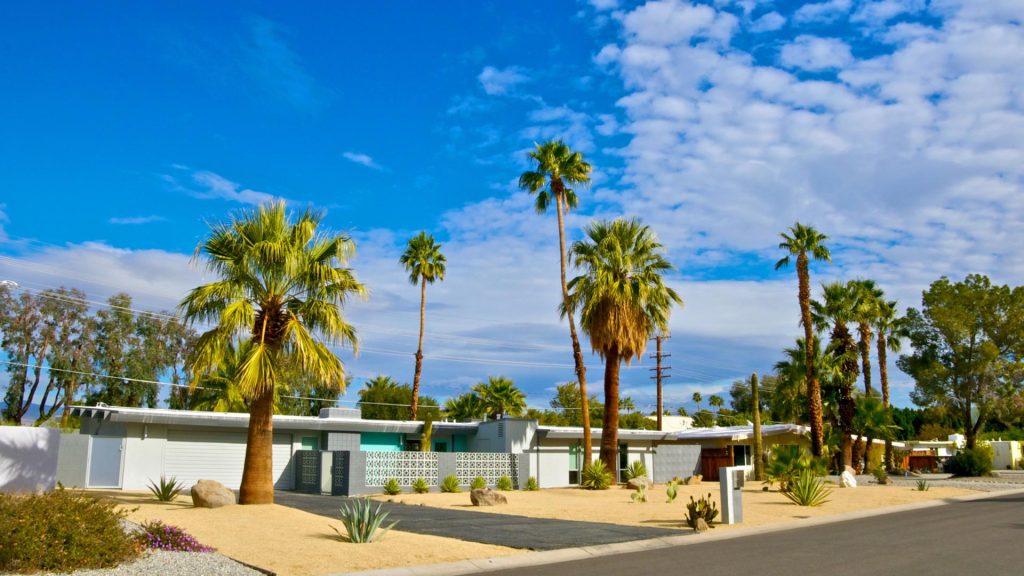Palm Springs is located at 33°49′26″N 116°31′49″W (33.823990, −116.530339) in the Sonoran Desert. The city has a total area of 95.0 square miles (246 km2), of which 94.1 square miles (244 km2) is land and 0.9 square miles (2.3 km2) (1%) is water. Palm Springs is sheltered by the San Bernardino Mountains to the north, the Santa Rosa Mountains to the south, by the San Jacinto Mountains to the west and by the Little San Bernardino Mountains to the east.
Palm Springs has a hot desert climate, with over 300 days of sunshine and around 4.83 inches (122.7 mm) of rain annually. The winter months are warm, with a majority of days reaching 70 °F (21 °C) and in January and February days often see temperatures of 80 °F (27 °C) and on occasion reach over 90 °F (32 °C), while, on average, there are 17 nights annually dipping to or below 40 °F (4 °C); freezing temperatures occur in less than half of years. The lowest temperature recorded is 19 °F (−7 °C), on January 22, 1937. Summer often sees daytime temperatures above 110 °F (43 °C) coupled with warm overnight lows remaining above 80 °F (27 °C). The mean annual temperature is 74.6 °F (23.7 °C). There are 180 days with a high reaching 90 °F (32 °C), and 100 °F (38 °C) can be seen on 116 days. The highest temperature on record in Palm Springs is 123 °F (51 °C), most recently achieved on July 28 and 29, 1995.
Palm Springs has one of the highest concentration of same-sex couples of any community in the United States. In the city, 7.2% of households belong to a same-sex couple compared to the national average of 1%. Palm Springs has the fifth-highest percentage of same-sex households in the nation. Former mayor Ron Oden estimated that about a third of Palm Springs is gay. Over various times, the city has catered to LGBT tourists. Palm Springs is host to the Greater Palm Springs Pride Celebration. This celebration, held every year in November, includes events such as the Palm Springs Pride Golf Classic, the Stonewall Equality Concert, and a Broadway in Drag Pageant. The city also held same sex wedding ceremonies at the iconic ‘Forever Marilyn’ statue located downtown, before its relocation in 2014.
One of the first transportation routes for Palm Springs was on the Bradshaw Trail, an historic overland stage coach route from San Bernardino to La Paz, Arizona. The Bradshaw Trail operated from 1862 to 1877.
Palm Springs International Airport serves Palm Springs and the Coachella Valley. Historical note: during World War II it was operated as the Palm Springs Army Airfield.
SunLine Transit Agency provides bus service in the Coachella Valley.
Morongo Basin Transit Authority provides bus service to and from Morongo Basin communities.
Amtrak’s Sunset Limited and Texas Eagle form a single train which stops thrice weekly at the Palm Springs Amtrak station. Amtrak’s Thruway Motorcoach connects Palm Springs to Bakersfield, Claremont, Indio, La Crescenta, Ontario, Pasadena, Riverside and San Bernardino. A city curbside Thruway bus stop is located at 3400 East Tahquitz Canyon Way.
Greyhound Bus Lines has a stop (no ticketing) at the Palm Springs Amtrak station.




